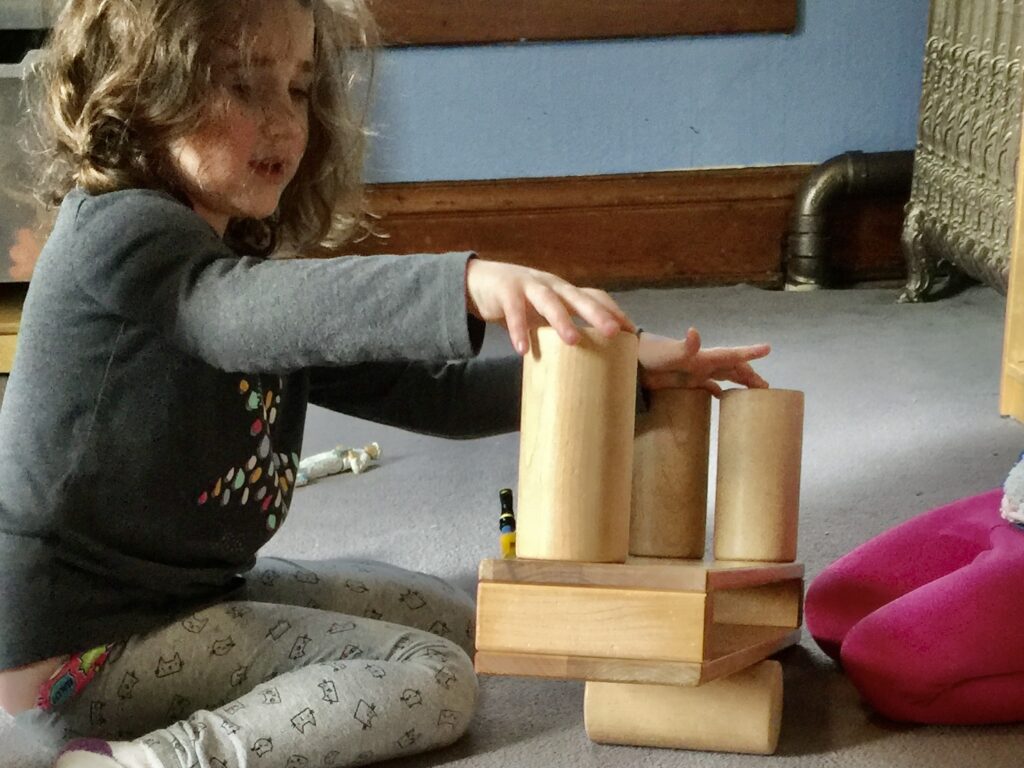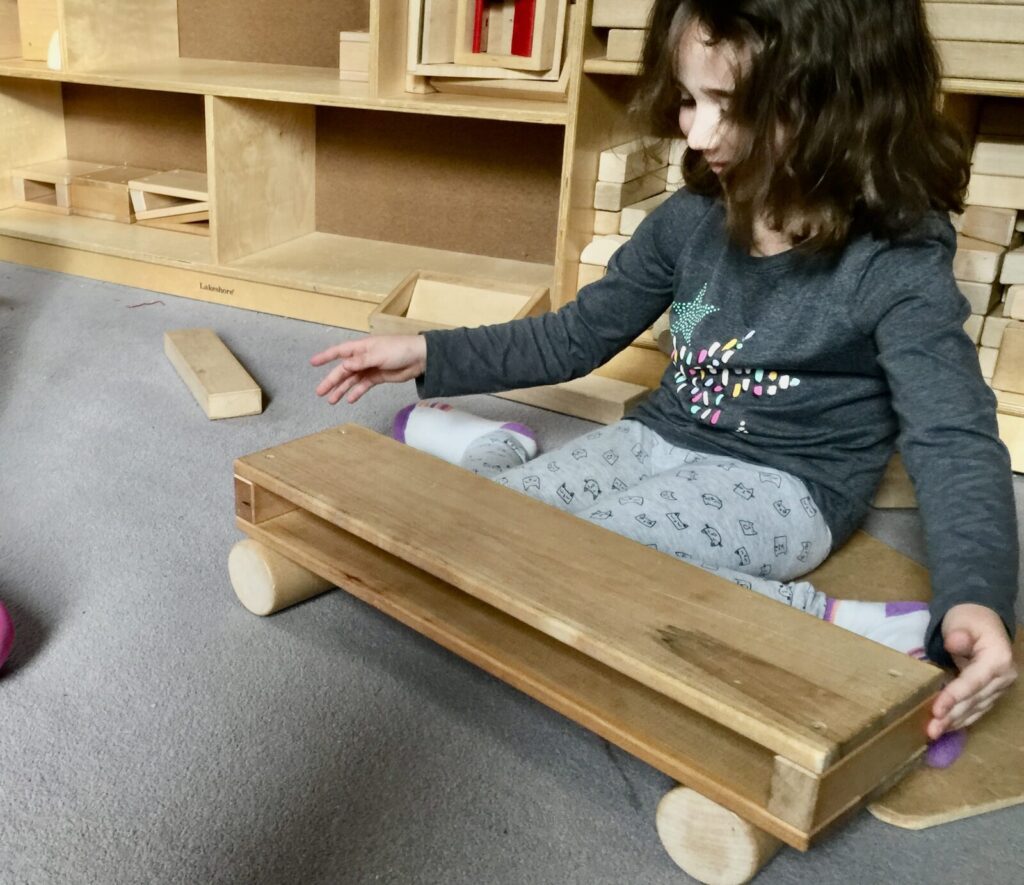Building Brains With Blocks
"I think we need another cylinder on this side," says Rowan. "Can you put that on for me? I will keep it balanced."
Rowan and Parker are deeply engrossed in block play. Their investigations into balance, gravity, force, and cause and effect have led these four-year-old friends deep into the STEM zone.
“Do you want the big cylinder or the small one?” asks Parker.
Measurement skills are important—and this activity gives the girls an opportunity to experiment with size, shape, volume, area and weight. All of these activities can be carried out with unit blocks.
“We need the big one," says Rowan. "See the two big ones on that side? We need another big one on this side."
“I think so too!” says Parker as she carefully adds a big cylinder to the block structure.

By asking questions, making observations and gathering information, the two friends are following the scientific method—just like real-life scientists.
When you give children ample time to explore and investigate, you give them valuable opportunities to develop their problem-solving skills, test hypotheses, and use mathematical and scientific reasoning.

Blocks help children learn about gravity, balance, weight and spatial awareness. Block play is especially good for spatial learning because it provides opportunities for children to arrange objects and see what happens. Each building that rises and falls is an investigation into how things work in the physical world.
We often hear that block play fosters the development of fine-motor skills, coordination and other areas of physical development. But you rarely hear educators talk about the executive function and self-regulation skills that children develop through block play. Working as a team or carefully adding a block to a tower without knocking it down requires self-control, patience, persistence and resilience.

Best of all, this is child-led play. Everything flows when curiosity and wonder open doors to learning and discovery!
Productive block play takes time, so 15 or 20 minutes won't be sufficient. You can't teach creativity. But you can give children the gift of time for hands-on investigations with materials that encourage creative play.
These extended play periods foster a deeper level of engagement, which will lay the foundation for future academic success by lengthening early learners' attention spans and promoting the development of problem-solving and critical-thinking skills.
Ready for more STEM investigations? Check out the How Many Legos Tall? lesson plan on our Early Science Matters website. Then find out more about The Many Benefits of Block Play in the Ready Child Find an Activity section.